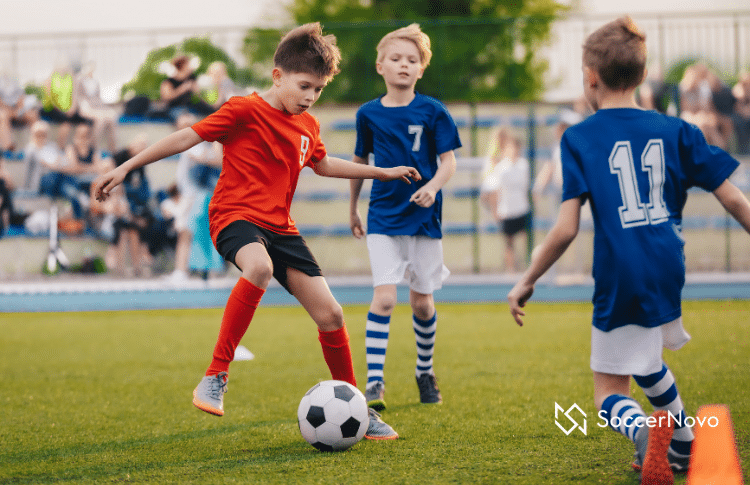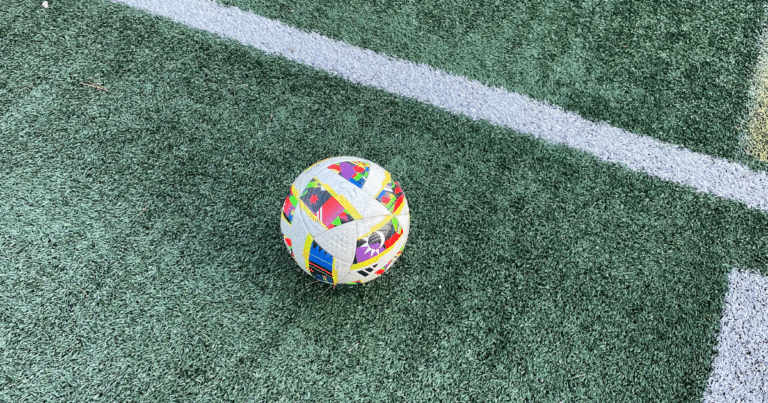Soccer Workouts for 12 Year Olds
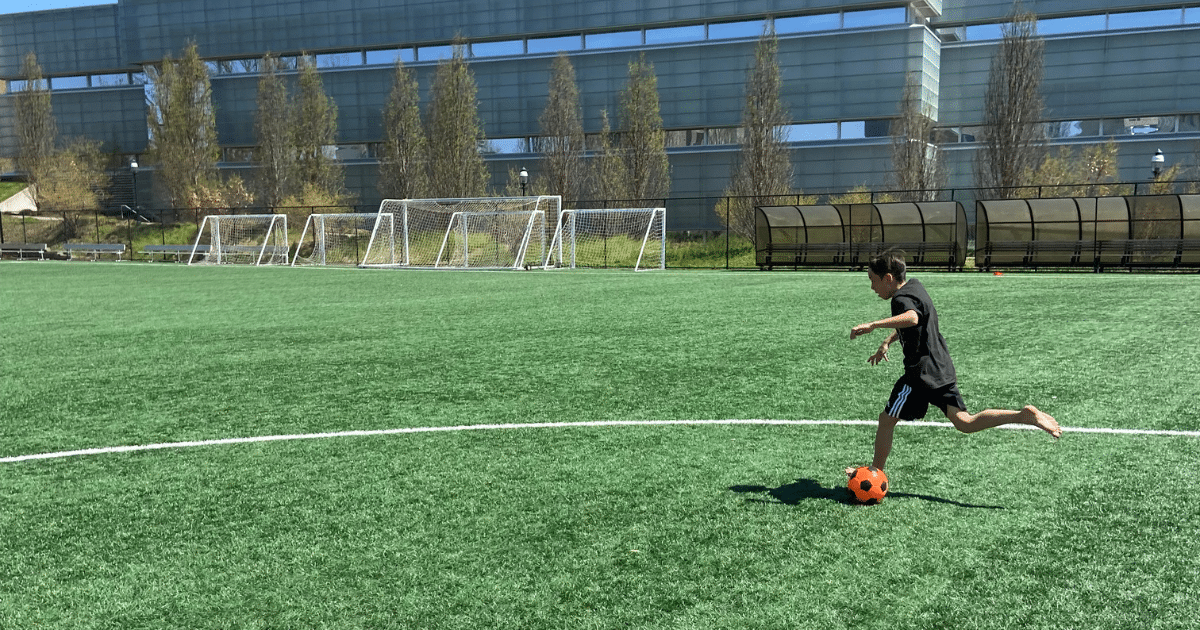
Developing soccer players is a progression. Without the right fundamentals in place, players won’t grow as fast. For players to develop quicker, they need to take a step back and go slow. It sounds counterproductive, but it’s the best way to get better.

For 12-year-olds, soccer can be a fun and exciting way to stay active but it’s also during this time that they can start separating their game from their peers. Meaning, players can make a lot of headway if they have the right foundation in place.
In this article, I’ll provide my personal thoughts on what makes good soccer players at this age and workouts they can do to get better. By incorporating these elements into their workout routine, children can develop the physical and mental skills they need to become successful soccer players.
What Makes a Great Soccer Player at Age 12
I’ve seen many youth soccer games and have experienced players develop at different stages of their young soccer careers.
What separates good from great soccer players at this age comes down to three things:
- Mental Assertiveness
- Ability To Read the Game
- Pursuit to Work on the Basics (dribbling and passing)
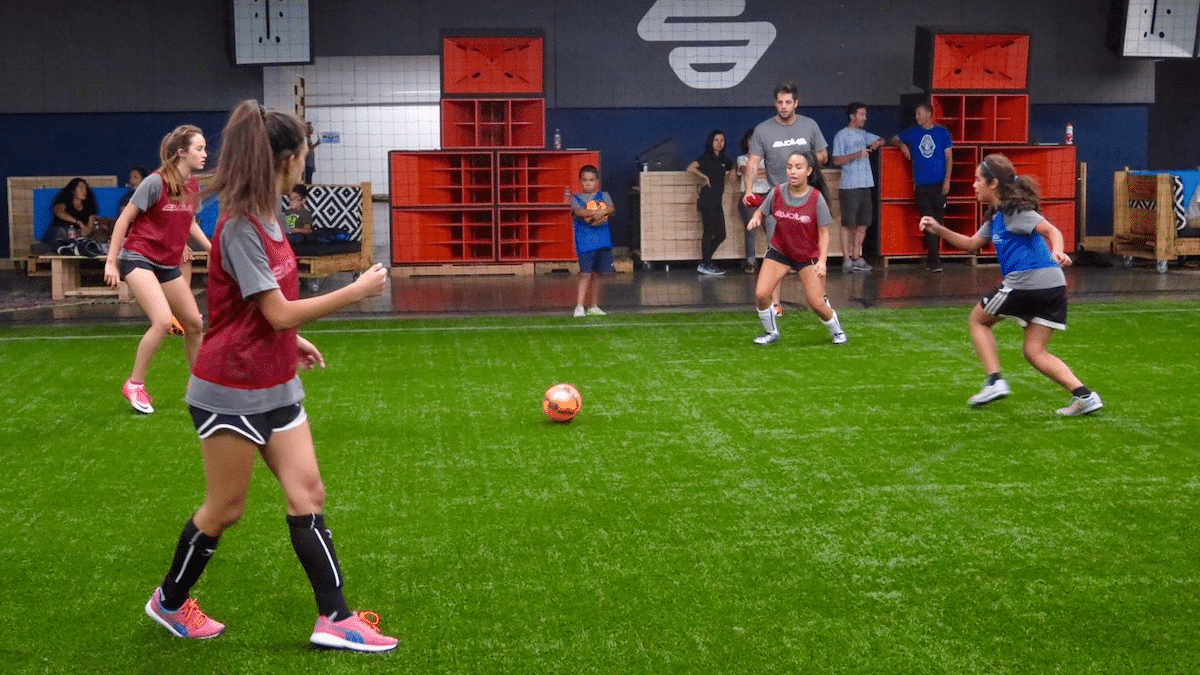
Soccer players with a strong mentality will be in a much better position to grow and get better. They will have the mental bandwidth to push past any ‘failures’ and continue to work on their game because they love it. These players overlook small hurdles to become the best versions of themselves. This growth mindset will not only help their soccer career but anything they want to achieve in life.
The ability to read the game is crucial at this age. Being able to make precise passes as a player is heading towards the net or covering for another defender as they are getting beat can give you an edge. At year 12, some players physically develop quicker than others. For this reason, being a smart player who sees plays develop can eliminate the physical advantage.
The elite 12-year-old soccer players understand that repetition on the basics makes you a complete player. Throw away all the fancy Instagram drills and start passing against a wall 50 times per day. Or, set up cones to dribble through with each foot. It’s the repetition that refines the technical skills!
Now, let’s get to the fitness side of soccer.
Fundamentals of Soccer Fitness
Importance of Physical Conditioning
Physical conditioning is crucial for any soccer player, regardless of their age or skill level. It helps players improve their endurance, speed, agility, and overall fitness, which are all essential for performing well on the field.
For 12 year-olds, physical conditioning should focus on building a solid foundation of fitness and developing good habits that will last forever.
One of the most important aspects of physical conditioning is cardiovascular endurance. This can be improved through activities such as running, biking, or even swimming. It’s important to gradually increase the intensity and duration of these activities to avoid injury and burnout.
Strength training is also important for soccer players, as it helps build muscle and improve overall body composition. Resistance training with weights, resistance bands, or bodyweight exercises can all be effective for building strength. At this age, I don’t think introducing weights is a good idea. Using your body weight will help improve your strength.
Another overlooked aspect of physical conditioning is flexibility. Stretching before and after workouts can help prevent injury and improve range of motion. Incorporating yoga into a fitness routine can also be beneficial for improving flexibility. Lastly, using a foam roller to roll out those sore muscles can help you recover faster.
Warm-Up Routines
A good warm-up routine should include exercises that increase heart rate and body temperature, as well as movements that activate muscles and improve range of motion. Examples of warm-up exercises include jogging, jumping jacks, high knees, and butt kicks.
Dynamic stretching is also important for a soccer warm-up routine. This involves stretching while moving, rather than holding static stretches. Examples of dynamic stretches include leg swings, walking lunges, and inchworms.
12 Year Old Soccer Drills
When it comes to soccer drills for 12-year-olds, it is essential to focus on the basics of the game. Here are some drills that can help improve their skills:
Dribbling Skills
Dribbling is an essential skill in soccer, and it is important to start practicing it at an early age. One effective drill is the “dribble around the cone” drill. In this drill, the player starts with the ball at their feet and dribbles around a cone placed a few yards away. They then dribble back to the starting point and repeat the process. This drill helps players improve their dribbling skills and their ability to change direction quickly.
Passing Techniques
Passing is another crucial skill in soccer, and it is important to practice it regularly. One effective drill is the “passing square” drill. In this drill, four players stand in a square and pass the ball to each other. The players should focus on passing the ball accurately and quickly. This drill helps players improve their passing skills and their ability to communicate with their teammates.
Another effective drill is the “two-touch passing” drill. In this drill, two players stand facing each other and pass the ball back and forth using only two touches. This drill helps players improve their passing accuracy and their ability to control the ball.
Do you want to work on passing by yourself? Consider using a rebounder in the backyard!
Strength and Agility Training for 12 Year Olds
When it comes to soccer, strength, and agility are two important factors that can help young players improve their game. Fortunately, there are a variety of exercises that can help 12-year-olds build strength and agility without the need for expensive equipment or gym memberships.
Core Stability Exercises
Core stability is essential for soccer players, as it helps them maintain balance and control while running, jumping, and making quick turns on the field. There are several bodyweight exercises that can help young players develop core stability, including:
- Sit Ups or Crunches: This is a classic. Put both feet on the floor with your knees up and then use your core to lift yourself up.
- Planks: This is a goodie! This exercise involves holding a push-up position for a set amount of time. It can be done on the forearms or with straight arms.
- Side Planks: Similar to planks, but done on one side of the body, this exercise targets the oblique muscles.
- Bicycle Crunches: This exercise involves lying on the back and bringing the opposite elbow to the opposite knee while extending the other leg.
Speed and Agility Ladders
Speed and agility ladders are a great way for young soccer players to improve their footwork and coordination. These ladders can be purchased online or made at home using chalk or tape. Some exercises that can be done using a speed and agility ladder include:
- Lateral Shuffle: This exercise involves shuffling sideways through the ladder, placing one foot in each square.
- In and Out: This exercise involves stepping in and out of the squares of the ladder with both feet.
- Hopscotch: This exercise involves hopping on one foot in each square of the ladder.
Nutrition and Recovery

Healthy Eating Habits
Many players and parents overlook the nutrition aspect of a young athlete. They work so hard on the field so they must supply their body with proper nutrients.
A balanced diet with a variety of foods from all food groups is necessary to provide the energy and nutrients needed for exercise and growth. A 150-pound soccer player should eat about 1,800 to 2,100 calories per day from grains, fruits, veggies, sugars, and starchy foods to replenish the muscle and liver glycogen stores that get depleted during training sessions. This means about 450 to 525 grams of carbs the day before the game to fuel up.
Young soccer players should aim to eat a variety of nutrient-dense foods, including lean protein, whole grains, fruits, and vegetables. I’ve written about the foods soccer players should eat.
Importance of Hydration
Proper hydration is also crucial for young soccer players. They should drink water before, during, and after exercise to prevent dehydration. Encourage your young soccer player to drink water instead of sugary drinks, which can lead to dehydration and decreased performance.
Rest and Recovery Strategies
Rest is equally important as working out! The muscle recovery window is 48-72 hours for soccer players to be ready for high intensities again. Therefore, young soccer players need to get enough sleep and rest between games and practices to allow their muscles to recover.
Encourage your young soccer player to take rest days and use recovery strategies, such as stretching, foam rolling, and massage, to prevent injury and improve performance.
Make it Part of Their Routine
To make soccer workouts a habit, it is essential to incorporate them into their daily routine. Encourage them to set aside a specific time of day for their soccer training, and make sure they stick to it. Consistency is key to improving their skills and achieving their goals.
One way to help them stay motivated is to create a workout plan that includes both individual and team exercises. It’s hard for a 12-year-old to stay on task week in and week out. Therefore, creating a loose workout plan will give them the much-needed structure.
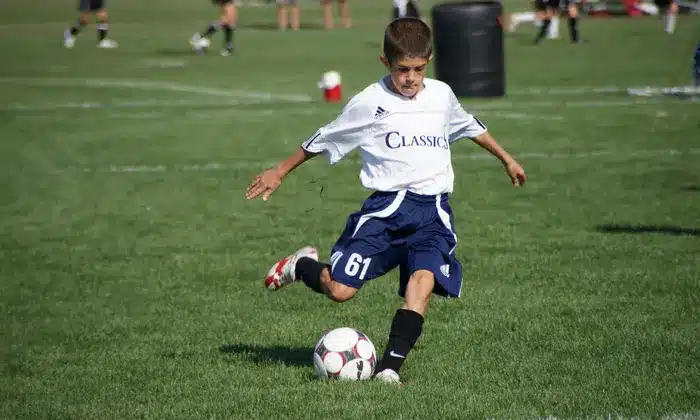
Another effective strategy is to make the workouts fun and engaging. Incorporating games and challenges into the training sessions can help keep the players interested and motivated. Additionally, allowing them to choose some of the drills or exercises can give them a sense of ownership and help them feel more invested in the process.
It is also important to emphasize the importance of proper nutrition and hydration. Encourage your child to eat a balanced diet that includes plenty of fruits, vegetables, and lean protein. Let them have their Swedish Fish or other candy sparingly. Remind them to drink plenty of water before, during, and after their workouts to stay hydrated and energized.
By making soccer workouts and recovery periods a lifestyle, you’ll find that they may stick to it more consistently. It doesn’t have to be a chore. It can be fun and exciting!
As they continue to dedicate themselves to soccer, just watch how much they flourish as an athlete (and more importantly) as a person.

Written By: SoccerNovo
SoccerNovo is an independent youth soccer media brand built to help parents, players, and coaches better understand the game and the pathways available in U.S. soccer. Our mission is to make youth soccer simpler, clearer, and more accessible for everyone involved in it.
Let’s connect



